Discover 11 hidden attractions, cool sights, and unusual things to do in Carmarthen (United Kingdom). Don't miss out on these must-see attractions: Carmarthenshire County Museum, Carmarthen Castle, and St Peter's Church. Also, be sure to include English Baptist Church in your itinerary.
Below, you can find the list of the most amazing places you should visit in Carmarthen (Wales).
Table of Contents
Carmarthenshire County Museum

Museum in Abergwili, Wales. Carmarthenshire County Museum is a museum in the old county town of Carmarthen, Carmarthenshire in Wales.[1]
Address: The Old Palace Bishop's Palace, SA31 2JG Carmarthen
Carmarthen Castle
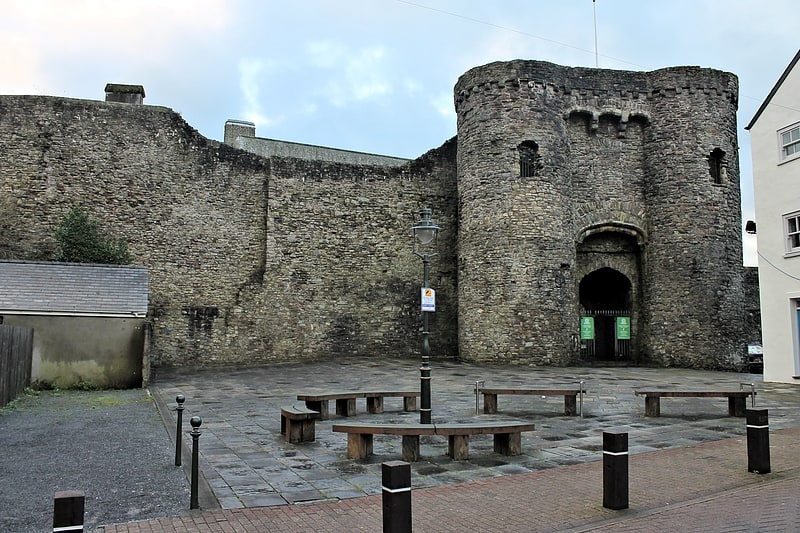
Museum in Carmarthen, Wales. Carmarthen Castle is a ruined castle in Carmarthen, West Wales, UK. First built by Walter, Sheriff of Gloucester in the early 1100s, the castle was captured and destroyed on several occasions before being rebuilt in stone during the 1190s. The castle was captured by Owain Glyndŵr in 1405. Henry VII's father died at Carmarthen Castle in 1456. During the Wars of the Roses the castle fell to William Herbert and, during the Civil War, was captured by Parliamentary forces. It was dismantled by order of Oliver Cromwell in the mid 1600s.
It has been used as the site of Carmarthen's gaol until the 1920s. The remains of the castle were given a Grade I heritage listing in 1954 and is currently a tourist attraction and site of the town's Tourist Information Centre.[2]
Address: Nott Square, SA32 Carmarthen
St Peter's Church
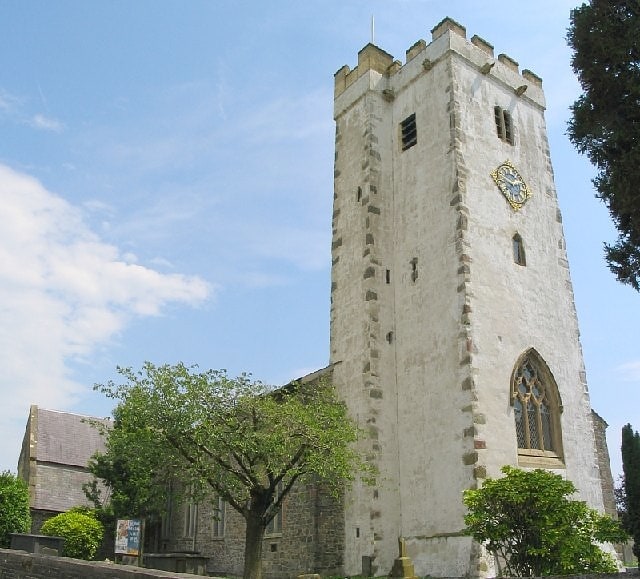
Anglican church in Carmarthen, Wales. St Peter's Church is the Church in Wales parish church for the town of Carmarthen, Wales. Though founded much earlier, the present building dates from at least the 14th century. It is the largest church in the Diocese of St David's and is a Grade I listed building. It is also the oldest surviving building in Carmarthen.[3]
Address: Church St, SA31 1GW Carmarthen
English Baptist Church

The English Baptist Church is a Baptist church in the town of Carmarthen, Carmarthenshire, Wales. The building dates from 1869 and is located at the street address 9 Dark Gate in Lammas Street. The church was designated a Grade II* listed building on 19 May 1981.
The church is set back from the road in a courtyard where the Black Horse Inn had previously stood. It was built between 1869 and 1870 by the Carmarthen architect George Morgan, his first major undertaking. Records show that the church cost £1,400 to build. The façade is built in temple-style from Bath stone, with four tall columns supporting the portico. There is a flight of wide stone steps leading to the entrance. The interior has a single raked gallery, behind which is an arch with painted foliage and fluted decoration. The edge of the gallery is bounded by a cast iron band and is supported by cast iron columns. The lower parts of the walls are panelled and the original furnishings are still in place; the great seat has a simple balustrade. The organ has a purpose-built gallery but was not installed until 1887.
The church was designated a Grade II* listed building on 19 May 1981, as "one of the most architecturally-ambitious classical chapels in Wales". The Royal Commission on the Ancient and Historical Monuments of Wales curates the archaeological, architectural and historic records for this church. These include digital photographs and colour transparencies of the exterior and interior of the building, and a leaflet containing a short history of the church.[4]
Carmarthen Bridge

Bridge. Carmarthen Bridge is the modern 1930s road bridge crossing the River Tywi in Carmarthen, Wales, carrying the A484 road.[5]
Eglwys
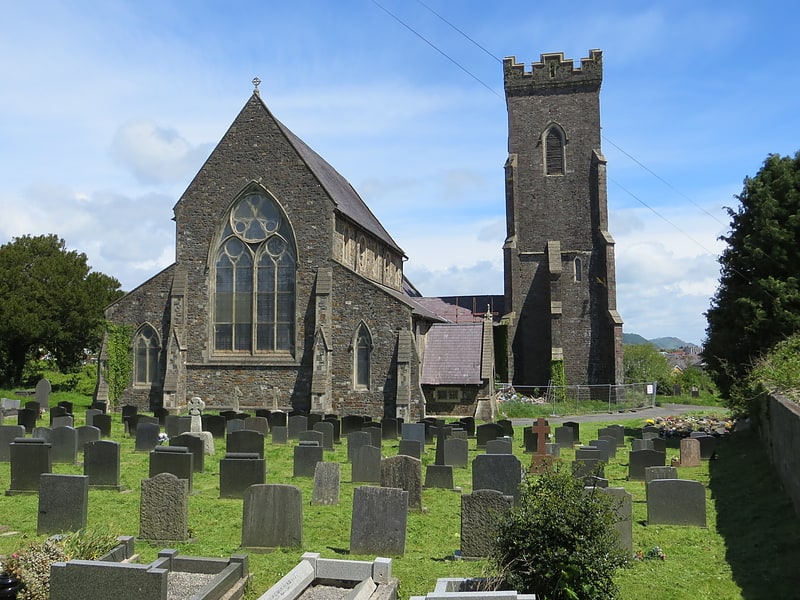
Eglwys Dewi Sant or St David's Church, was an Anglican parish church in the town of Carmarthen, Carmarthenshire, Wales. Built in the 1830s and briefly considered as a possible replacement cathedral for the dioceses of St David's, the church eventually became the home of Carmarthen's main Welsh-speaking Anglican congregation. The church closed in the early twenty-first century after the building became unsafe.[6]
Moridunum
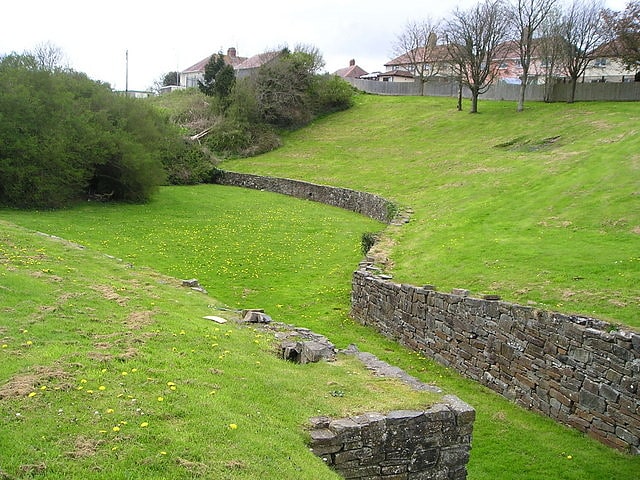
Moridunum was a Roman fort and town in the Roman province of Britannia. Today it is known as Carmarthen, located in the Welsh county of Carmarthenshire.[7]
English Congregational Church
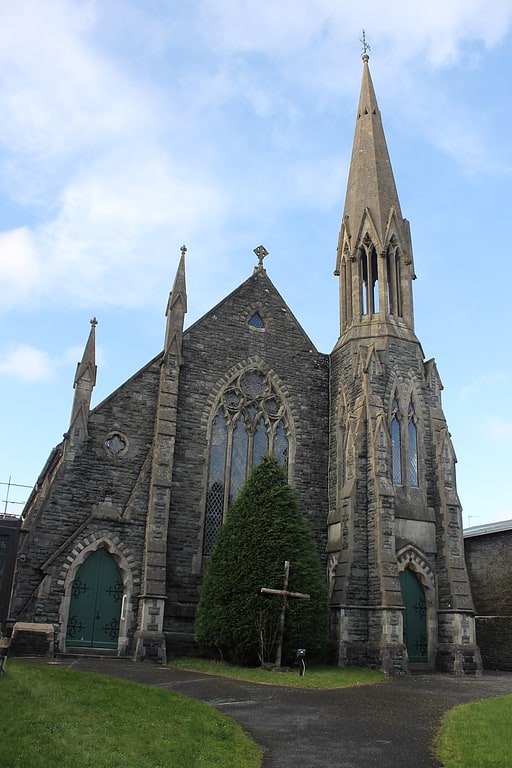
Church in Carmarthen, Wales. The English Congregational Church, Carmarthen is a Congregational church in the town of Carmarthen, Carmarthenshire, Wales. The building dates from 1861 and is located at 105, Lammas St, Carmarthen. The church was designated as a Grade II listed building on 19 May 1981.
The English Congregational Church in Carmarthen was built in 1861 by Poulton and Woodman, an experienced firm of chapel builders. It is similar to the Presbyterian church they built in Brecon in 1872. The English Congregational Church is rendered more conspicuous by being set at an angle to the street. It is built of rock-faced stone with Bath stone features and is in an exaggeratedly Gothic style. There are a lot of strange angles and junctions, a steep gable end with a tall window, a tower with spiral stair and a slender spire on an open bell platform. There are other strange features and by contrast, the interior is quite plain, with arch-braced roof trusses, and an organ recess with a pointed apse. The pulpit is polygonal and the single gallery has a front made from diagonally arranged boarding.
The church was designated as a Grade II listed building on 19 May 1981, being "a remarkably confident example of Gothic chapel architecture". The Royal Commission on the Ancient and Historical Monuments of Wales curates the archaeological, architectural and historic records for this church. These include digital photographs and colour transparencies of the exterior and interior of the building.[8]
Christ Church
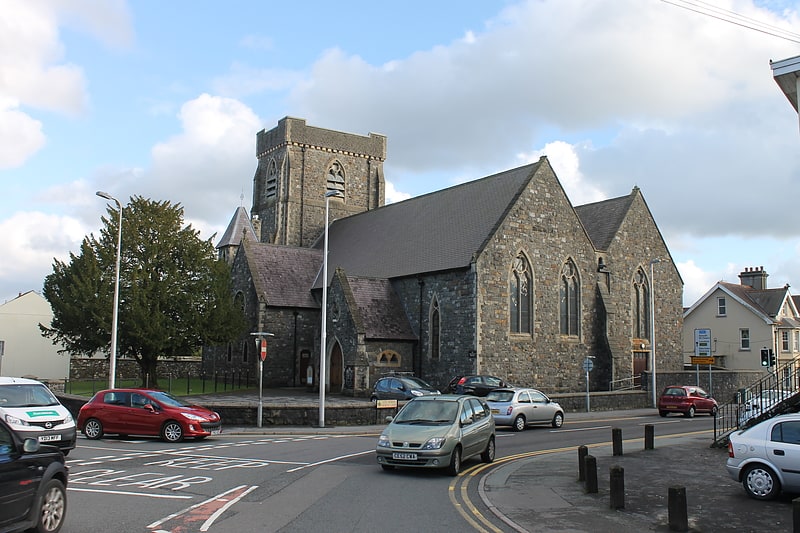
Anglican church in Carmarthen, Wales. Christ Church is an Anglican parish church in the town of Carmarthen, Carmarthenshire, Wales. The building dates from 1869 and is located at Friar's Park, Carmarthen.
The parish church of Christ Church, Carmarthen was commenced by R. K. Penson in 1867. It was officially opened in September 1869, during the National Eisteddfod, by the Bishop of St David's, Connop Thirlwall. It was designed to be the English-language church for this expanding parish while Eglwys Dewi Sant, Carmarthen was designed to cater for Welsh-speaking parishioners. The organ was added in 1873 and renovations took place in 1891. The church has an unusual central tower with clasping buttresses and gables halfway up.
The church was designated as a Grade II listed building on 19 May 1981, being "a prominent mid-Victorian church with crossing tower, a landmark in distant views".[9]
Capel Heol Awst
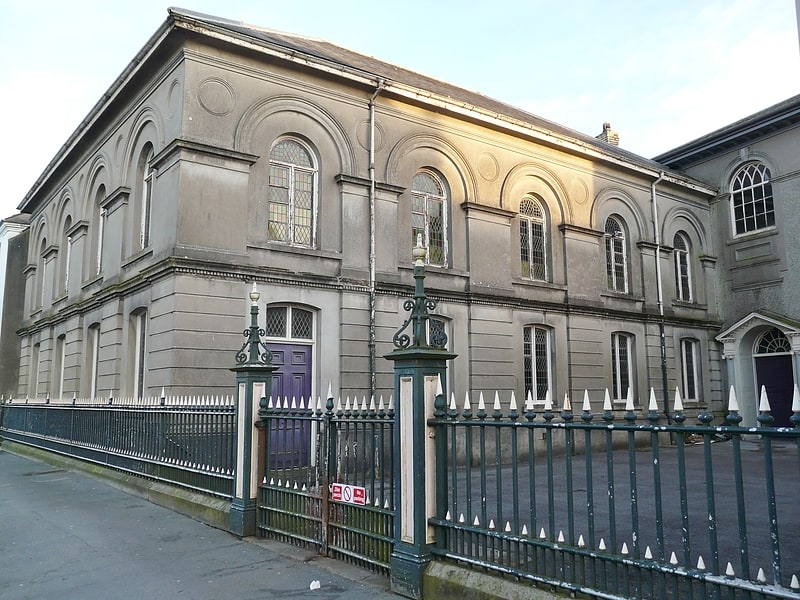
Chapel in Carmarthen, Wales. Capel Heol Awst is an Independent Welsh chapel in the town of Carmarthen, Carmarthenshire, Wales. The present building dates from 1826 to 1827, replacing a 1726 building which itself had been enlarged in 1802 and again in 1826 to seat a congregation of 1000. It is located at 7 Friars Park, Carmarthen. It was designated as a Grade II* listed building on 19 May 1981.[10]
Penuel Baptist Chapel
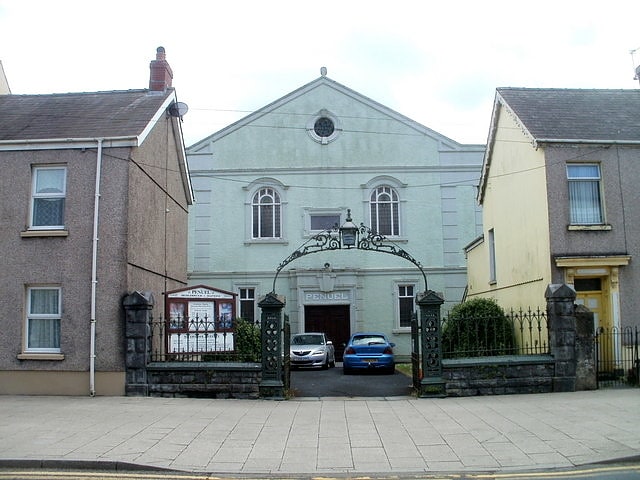
Penuel Baptist Chapel, Carmarthen is a Baptist chapel and attached schoolroom in the town of Carmarthen, Carmarthenshire, Wales. The building dates from 1786 and is located in Priory Street at 7, Esplanade, Carmarthen.
Penuel Baptist Chapel was built by Thomas Jones in 1872. It is set back from the road by a stout iron railing fence and has a schoolroom adjoining it which was built in 1886 by George Morgan. The chapel has a broad gabled facade and a large, uncluttered interior in a classical style. It has galleries on all four sides, the downward-pointing timber posts creating quasi-aisles. The corners of the galleries are curved and the fronts of the galleries have panels with balustrades. The organ is in a recess on one of the galleries and underneath this there is a free classical arcaded pulpit behind which is a curved and panelled back with pediments.
In 1909–10, Penuel was fully renovated, to such an extent that only the walls and roof remained from the previous building.
The church was designated as a Grade II listed building on 9 February 1999, being "a chapel of early origins with exceptional early C20 interior, unusual for the 2-storey arcades". At the time of its renovation in 1910 it was stated that the chapel could accommodate 800 people and was designed in such a way that the occupiers of any pew on the ground and gallery floors have a full view of the pulpit and organ.[11]